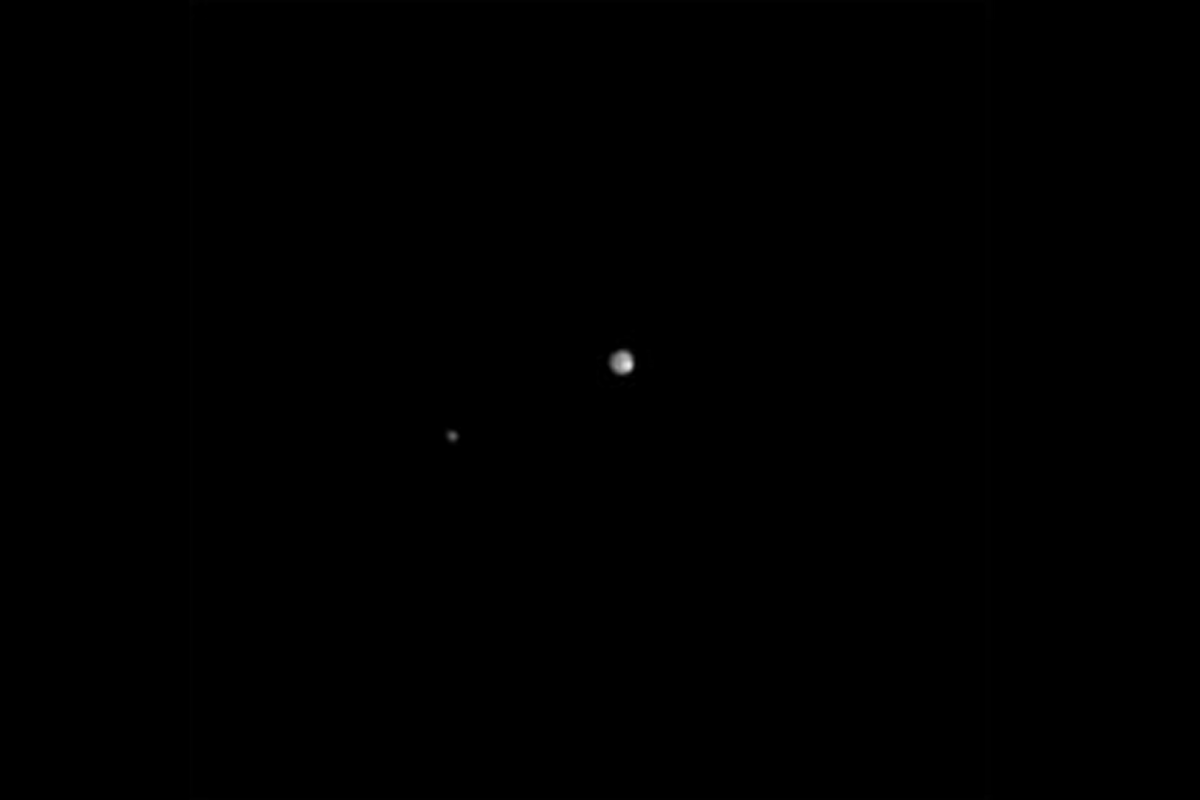What does Pluto really look like? We'll soon find out.
Loading...
Sen—New images of the dwarf planet Pluto, taken by NASA’s fast-approaching New Horizons spacecraft, confirm Hubble Space Telescope observations that the diminutive icy body has sharp differences in how much sunlight is being reflected off its surface.
Scientists don’t yet know if the variations are due to geology, topography or chemical composition, but scientists expect to be able to sort out that mystery as New Horizons completes its 9.5-year, 3 billion-plus mile journey to Pluto, with a closest approach slated for July 14, 2015.
“We are very excited to be at Pluto’s doorstep,” New Horizons lead scientist, Alan Stern, with the Southwest Research Institute, Boulder, Colorado, told reporters on a conference call on Wednesday.
In addition to its variable surface features, scientists may have found an early clue that Pluto has a polar ice cap.
By some measures, the images taken by earlier this month and released on Wednesday, are more detailed than those taken with the Earth-orbiting Hubble observatory.
“We can make higher resolution images, but we’re not yet as sensitive to faint objects as the Hubble is,” Stern said.
That will change dramatically as New Horizons covers the final 60 million miles to Pluto, which has never been visited by a spacecraft before.
Between the late 1970s and the late 1980s, NASA’s twin Voyager probes made it past Jupiter, Saturn, Uranus and Neptune, before heading out toward interstellar space.
Pluto, previously considered the ninth planet circling the Sun, was after the discovery of similar, elliptically orbiting icy worlds in the outer Solar System, a region known as the Kuiper Belt.
At the most distant part of its eccentric orbit, Pluto travels almost 50 times farther away from the Sun as Earth. Pluto also periodically orbits closer to the Sun than Neptune.
Little is known about the Kuiper Belt, though scientists believe it is filled with remnants left over from the formation of the Solar System.
will not only explore Pluto, but its largest moon Charon, which oddly shows a very different chemical mix of materials on its surface. The spacecraft also will study and look for other orbiting companions.
NASA expects another batch of New Horizons images to be taken mid-May.
“We are truly entering an entirely new realm of the Solar System, exploring the Kuiper Belt and beyond. Who knows what we’ll find out,” said NASA associate administrator for science John Grunsfeld.
Related Links:
from Sen. © 2015 Sen TV Limited. All rights reserved. This material may not be published, broadcast, rewritten or redistributed. For more space news visit and follow on Twitter.




